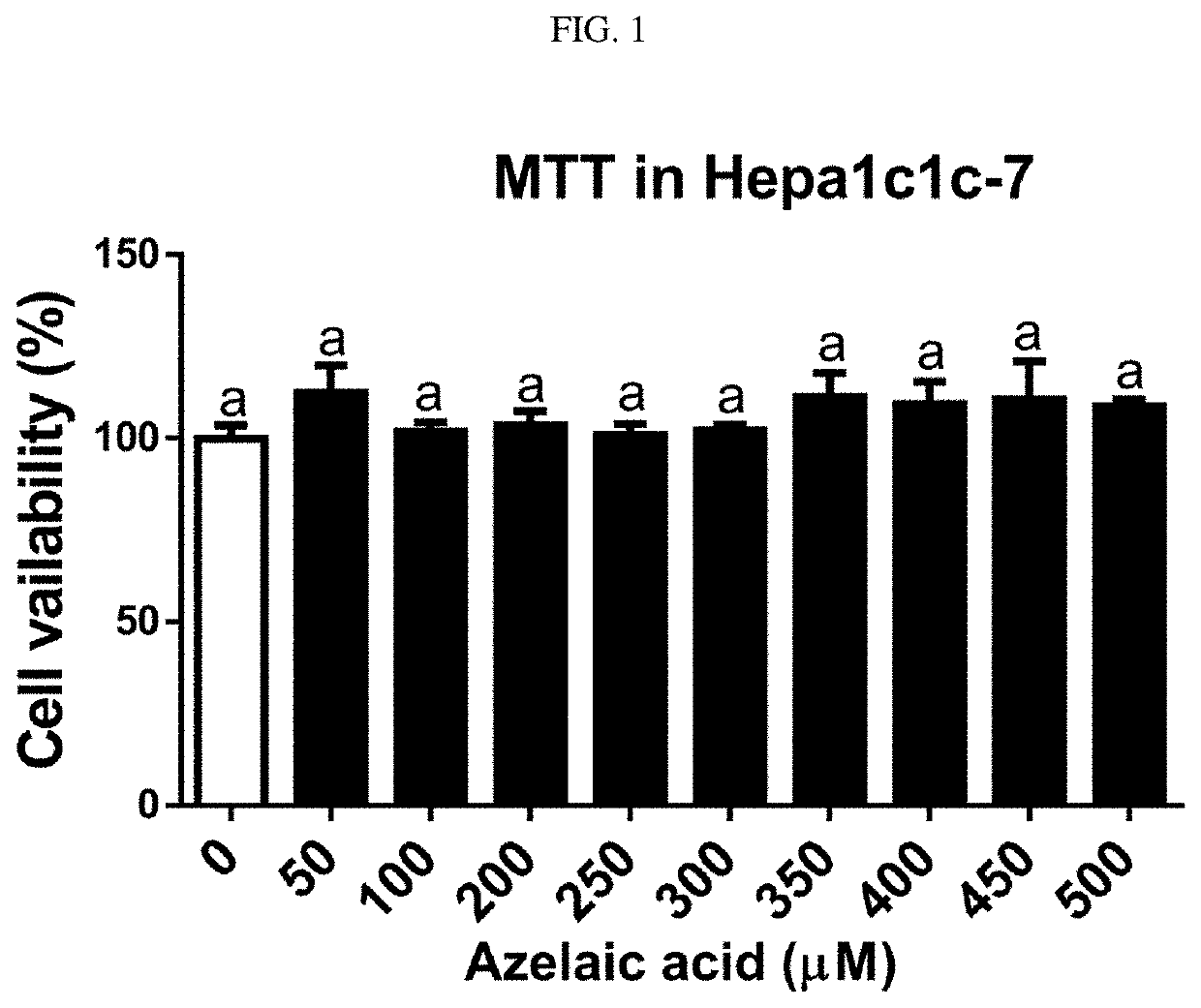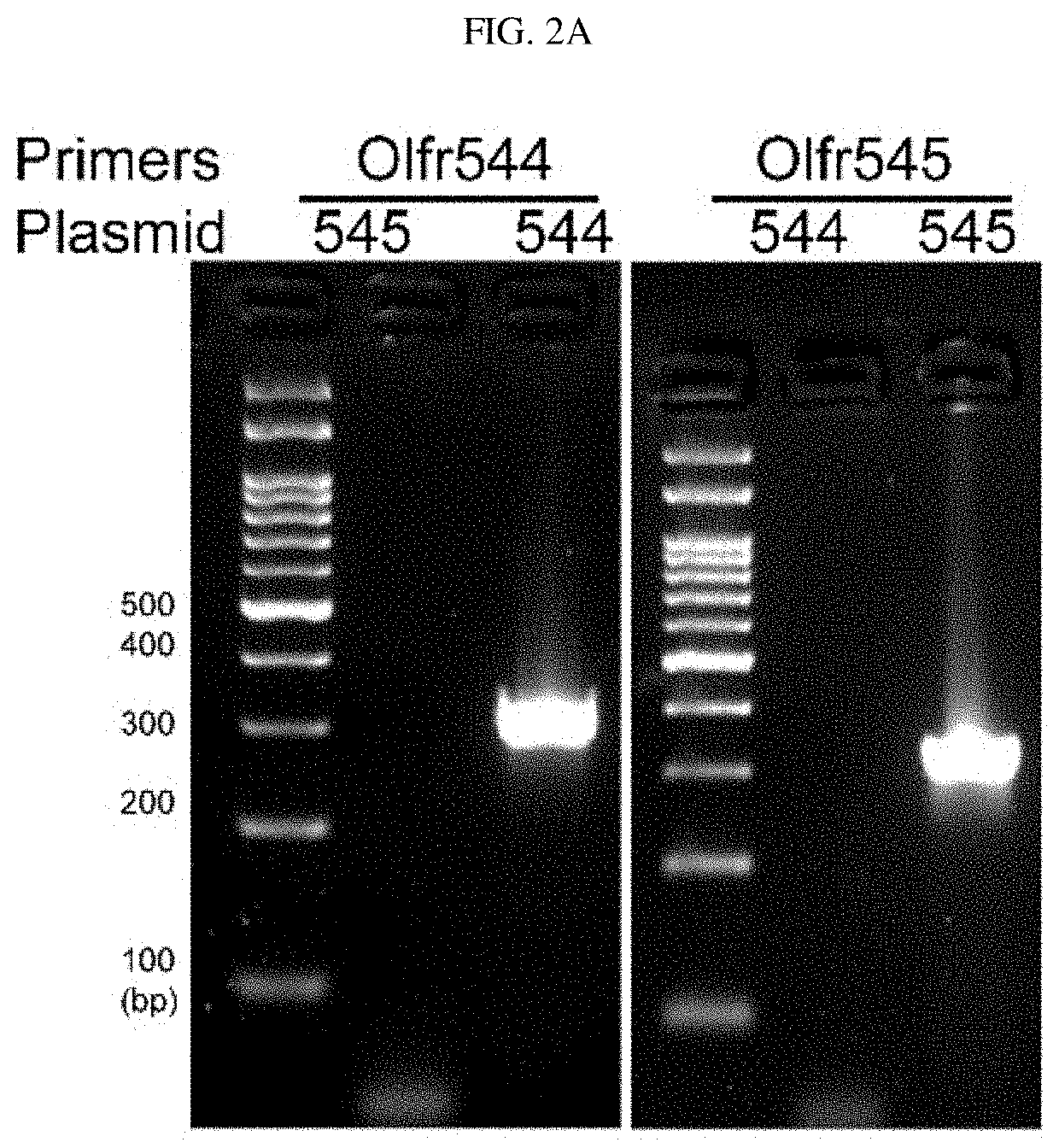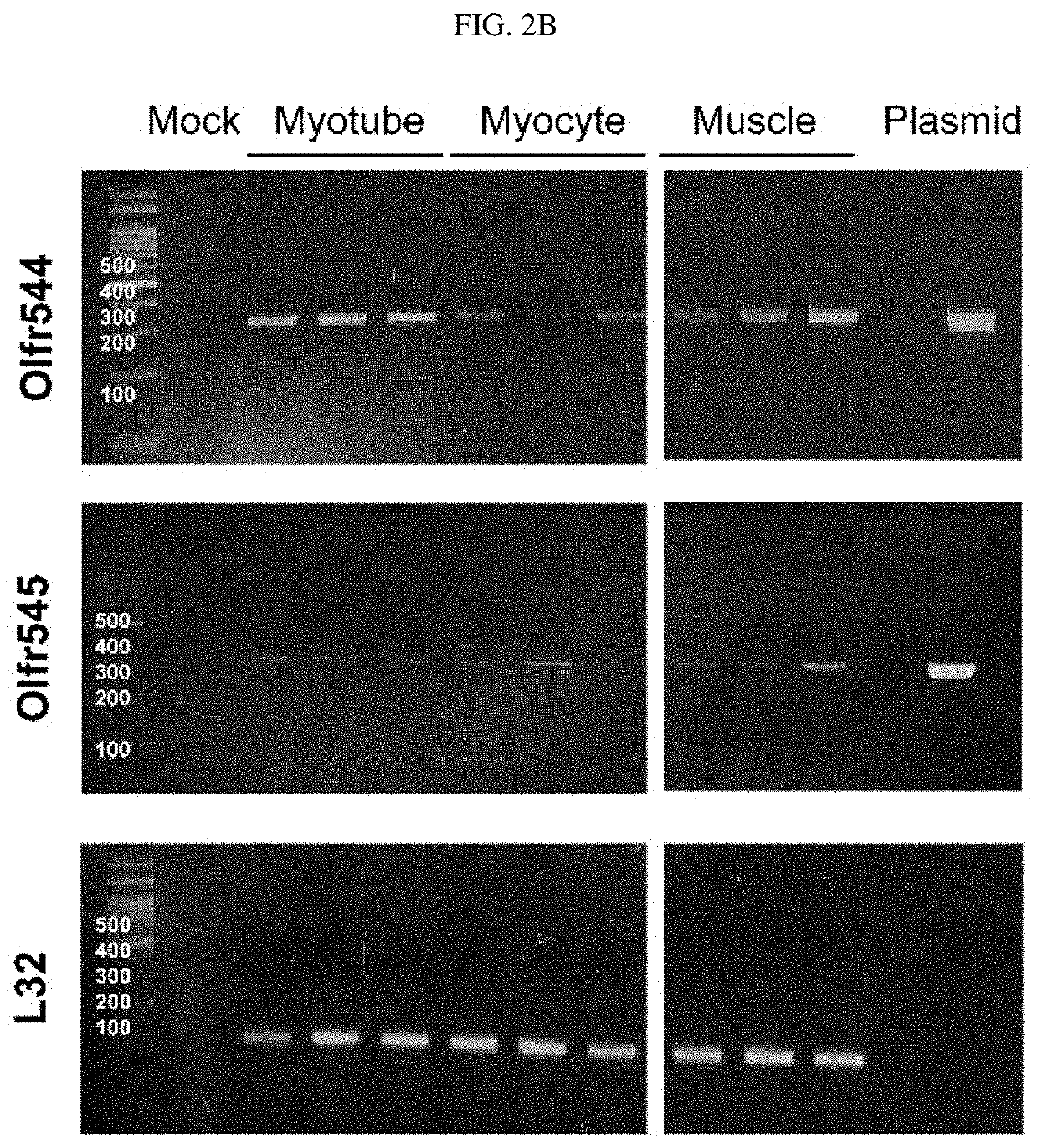Composition for promoting skeletal muscle activity via induction of mitochondrial biogenesis comprising of azelaic acid as an active ingredient
a technology of azelaic acid and skeletal muscle, which is applied in the field of compound for promoting mitochondrial biogenesis and preventing, treating or improving mitochondrial dysfunction, can solve the problems of mitochondrial dysfunction, very limited studies on the biological functions of aromatic fragrance components, and decrease in the ability to regulate homeostasis in the body, so as to increase decrease the number of mitochondria, and increase the density of mitochondrial
- Summary
- Abstract
- Description
- Claims
- Application Information
AI Technical Summary
Benefits of technology
Problems solved by technology
Method used
Image
Examples
example 1
n of Cytotoxicity of Azelaic Acid
[0087]To evaluate cytotoxicity of an azelaic acid, an MTT assay was performed. The MTT assay is a test method utilizing the ability of mitochondria to reduce MTT tetrazolium, which is a yellow water-soluble substrate, to non-water-soluble MTT formazan showing a blue-violet color by a dehydrogenase. The MTT reagent was prepared by being diluted in phosphate buffered saline (PBS) at a concentration of 2 to 5 mg / mL. Hepalcic-7 cells used in this experiment were purchased from the Korean Cell Line Bank, and cultured in a minimum essential medium Eagle alpha modification medium (MEM-alpha, Hyclone) supplemented with 10% FBS and 1% PEST. For this experiment, the Hepa1c1c-7 cells (4×104 cell / mL) were seeded into a 96-well plate and incubated at 37° C. under 5% CO2 for 24 hours, and then incubated for 24 hours by adding an azelaic acid in a concentration range of 0 to 500 μM. Afterward, each sample was treated with 100 μL of the MTT reagent (4 mg / mL), incuba...
example 2
ion of Olfr544 Expression in Muscle Cells and Murine Muscle
[0089]2-1. Cell Culture
[0090]Murine skeletal muscle cells, C2C12 cells, were purchased from the Korean Cell Line Bank. The cells were cultured using a Dulbecco's modified Eagle's medium (DMEM) supplemented with 20% fetal bovine serum (FBS; HyClone, USA) and 1% antibiotics (penicillin / streptomycin). When the cells reached 50% confluency (the degree of proliferation) under 5% CO2 (v / v) at 37° C., the cells were subcultured and maintained.
[0091]To differentiate the cells, the medium was replaced with DMEM containing 2% horse serum (HyClone), and after 7 days of differentiation, the cells were used in the experiment.
[0092]2-2. RT-PCR
[0093]RNA extracted from the murine skeletal muscle cells, C2C12 cells, was used to synthesize cDNA using the ReverTra Ace® qPCR RT Kit (TOYOBO, Osaka, Japan). RNA was pre-heated at 65° C. for 5 minutes and immediately stored on ice, to increase reaction efficiency. Afterward, a total of 8 μL of a re...
example 3
ion of the Effect of Promoting Mitochondrial Biogenesis in Response to Azelaic Acid Treatment in Muscle Cells
[0098]3-1. Cell Culture and Treatment with Materials
[0099]C2C12 cells differentiated for 7 days as described in Example 2-1 were treated with 12.5, 25 or 50 μM of an azelaic acid. After 24 hours, RNA and proteins were extracted according to the following method, and used in the experiment. For a control, instead of an azelaic acid, the same amount of DMSO was treated.
[0100]3-2. Quantitative Real-Time RT-PCR
[0101]qPCR was performed to synthesize cDNA using RNA extracted from cells grown in a culture medium and then treated with 300 μL of the RNAiso plus reagent per well. Subsequently, the synthesized cDNA was subjected to qPCR using the Thunderbird TMSYBR® qPCR Mix reagent (Takara Bio Inc., Japan). A gene expression level was analyzed using the iQ5 Cycler System (Bio-Rad, USA).
[0102]3-3. Immunoblotting
[0103]Protein extraction was performed using an RIPA buffer (10 mM Tris-HCl,...
PUM
| Property | Measurement | Unit |
|---|---|---|
| Density | aaaaa | aaaaa |
Abstract
Description
Claims
Application Information
 Login to View More
Login to View More - R&D
- Intellectual Property
- Life Sciences
- Materials
- Tech Scout
- Unparalleled Data Quality
- Higher Quality Content
- 60% Fewer Hallucinations
Browse by: Latest US Patents, China's latest patents, Technical Efficacy Thesaurus, Application Domain, Technology Topic, Popular Technical Reports.
© 2025 PatSnap. All rights reserved.Legal|Privacy policy|Modern Slavery Act Transparency Statement|Sitemap|About US| Contact US: help@patsnap.com



